The glycemic index (GI) measures how quickly foods raise blood sugar levels. Eating low GI foods can help manage diabetes and support overall health. To lower the glycemic index of foods, choose whole grains, add healthy fats and protein, and cook pasta al dente.

Some foods naturally have a lower GI. Slowly digestible starches tend to have a lower glycemic index[1], regardless of other nutrients. Picking the right carbs makes a big difference. Foods like beans, sweet potatoes, and oats digest slowly and don’t spike blood sugar as much.
Simple changes in food prep can also lower GI. Cooling cooked starches creates resistant starch, which digests more slowly. Adding acid, like vinegar or lemon juice, to meals slows digestion too. These easy tricks help control blood sugar without giving up favorite foods.
Key Takeaways
- Choosing whole grains and slowly digestible starches helps lower the glycemic index of meals
- Adding healthy fats, proteins, and acids to carb-rich foods reduces their impact on blood sugar
- Simple food preparation techniques like cooking pasta al dente can decrease the glycemic index
Understanding the Glycemic Index
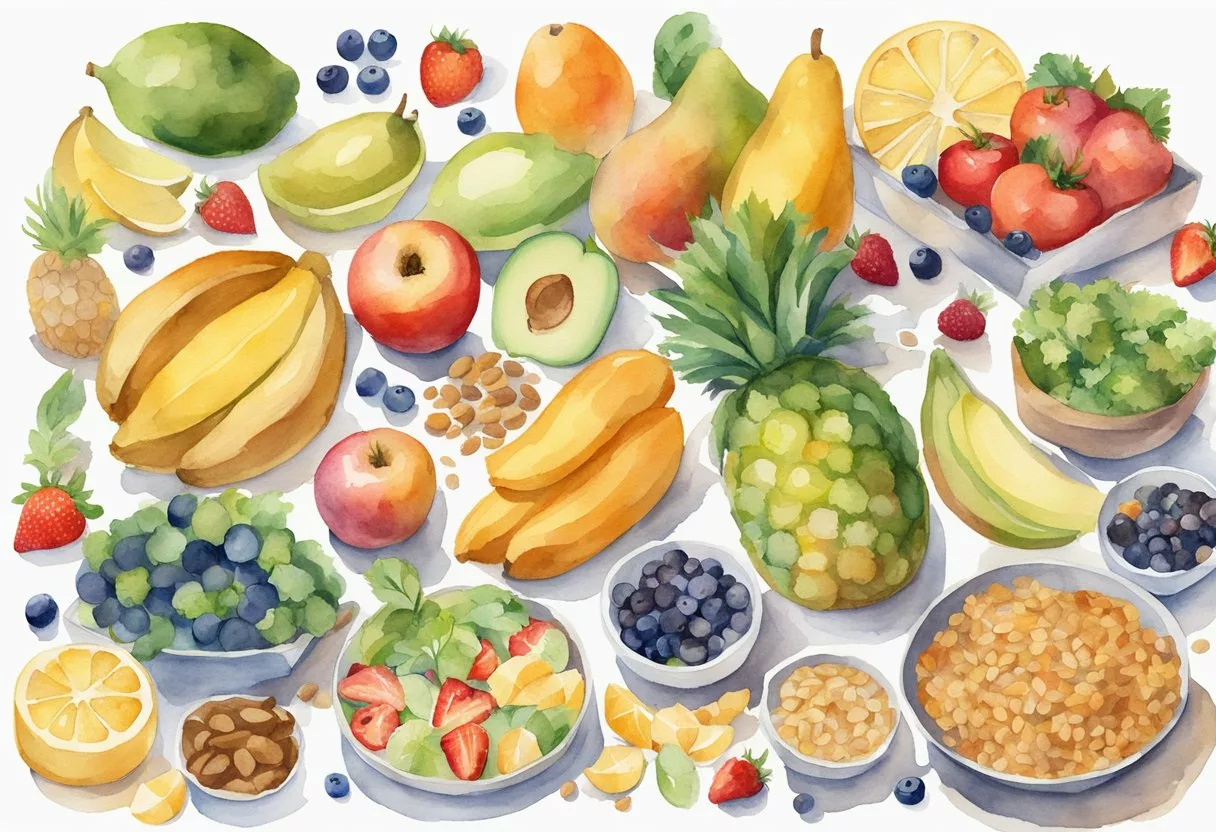
The glycemic index helps measure how foods affect blood sugar. It provides a useful tool for managing glucose levels and making smart food choices.
The Science Behind GI and Blood Sugar
The glycemic index (GI) ranks carbohydrate-containing foods on a scale from 0 to 100. This scale shows how quickly foods raise blood glucose after eating. Pure glucose has a GI of 100[2].
Foods with a high GI (70 or above) cause rapid spikes in blood sugar. Low GI foods (55 or less) lead to slower, more gradual increases. Medium GI foods fall between 56-69.
When a person eats high GI foods, their blood sugar rises quickly. This triggers a large release of insulin. Low GI foods cause a slower, more steady rise in blood sugar and insulin.
Differentiating Between GI, Glycemic Load, and Carbohydrates
While related, glycemic index, glycemic load, and carbohydrates are distinct concepts:
- Glycemic Index: Measures how quickly a food raises blood sugar
- Glycemic Load: Considers both GI and portion size
- Carbohydrates: Nutrients that provide energy
Glycemic load gives a more complete picture of a food’s impact on blood sugar. It accounts for both the quality (GI) and quantity of carbs. To calculate glycemic load, multiply the GI by the grams of carbs per serving, then divide by 100.
Not all carbs are equal. Some digest slowly, while others break down rapidly. The GI helps distinguish between different types of carbohydrates and their effects on the body.
Impacts of GI on Health
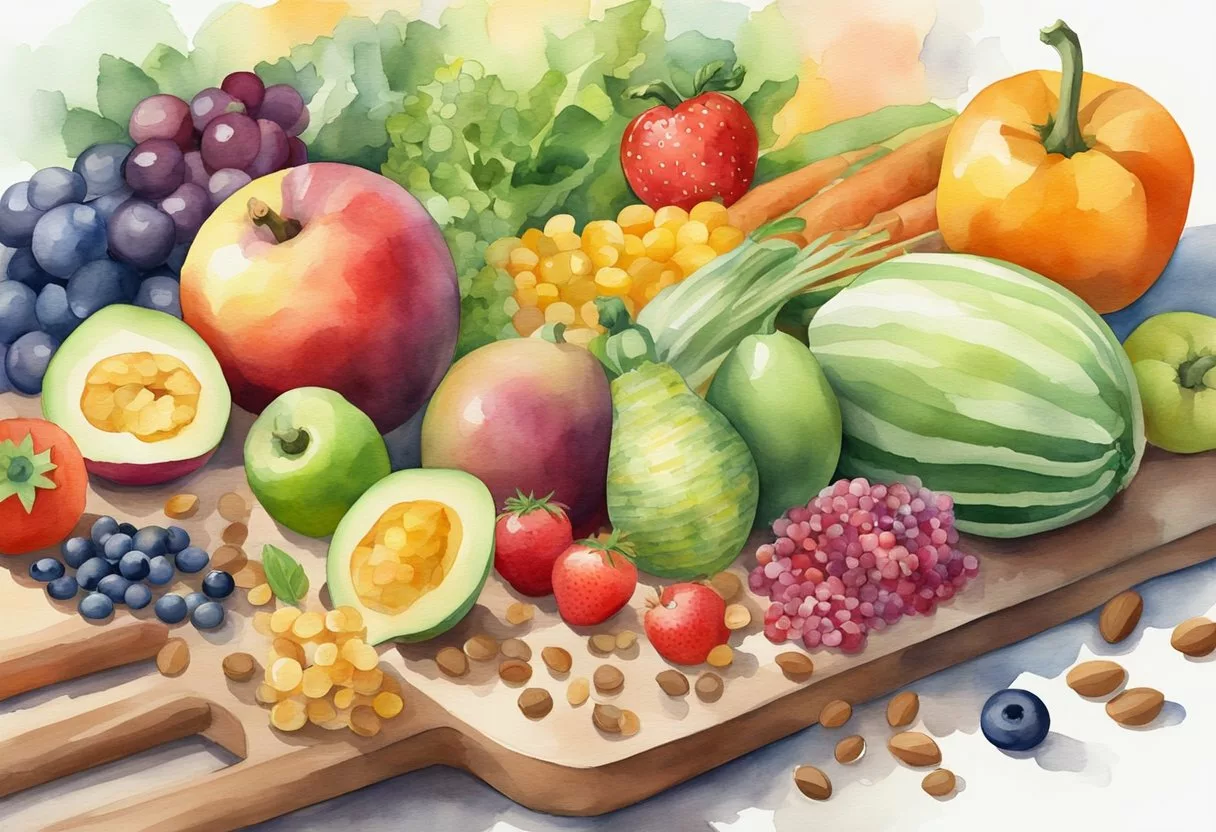
The glycemic index (GI) of foods affects blood sugar levels and can play a role in managing diabetes and weight. It may also impact heart health.
GI’s Role in Diabetes Management
People with diabetes can use the glycemic index to help control their blood sugar. Low GI foods[3] (GI of 55 or less) cause a slower rise in blood glucose. This makes them better choices for diabetes management.
Examples of low GI foods include:
- Most fruits and vegetables
- Beans
- Minimally processed grains
- Low-fat dairy
High GI foods (GI of 70 or higher) can cause quick spikes in blood sugar. These include white bread and sugary foods. People with diabetes should limit these items.
Choosing more low GI foods can help keep blood sugar steady. This is key for both type 1 and type 2 diabetes control.
GI Considerations for Weight Loss and Heart Disease
The glycemic index may also affect weight and heart health. Low GI diets might aid weight loss. They help people feel full longer and avoid blood sugar crashes that lead to hunger.
Studies suggest that low GI eating may:
- Support weight loss efforts
- Lower the risk of heart disease
- Reduce cholesterol levels
Eating mostly low GI foods can help manage weight. It may also protect heart health by keeping blood sugar and insulin levels stable.
High GI diets might increase the risk of type 2 diabetes and heart problems. Balancing meals with low GI options is a smart choice for overall health.
Foods and Their Glycemic Indices
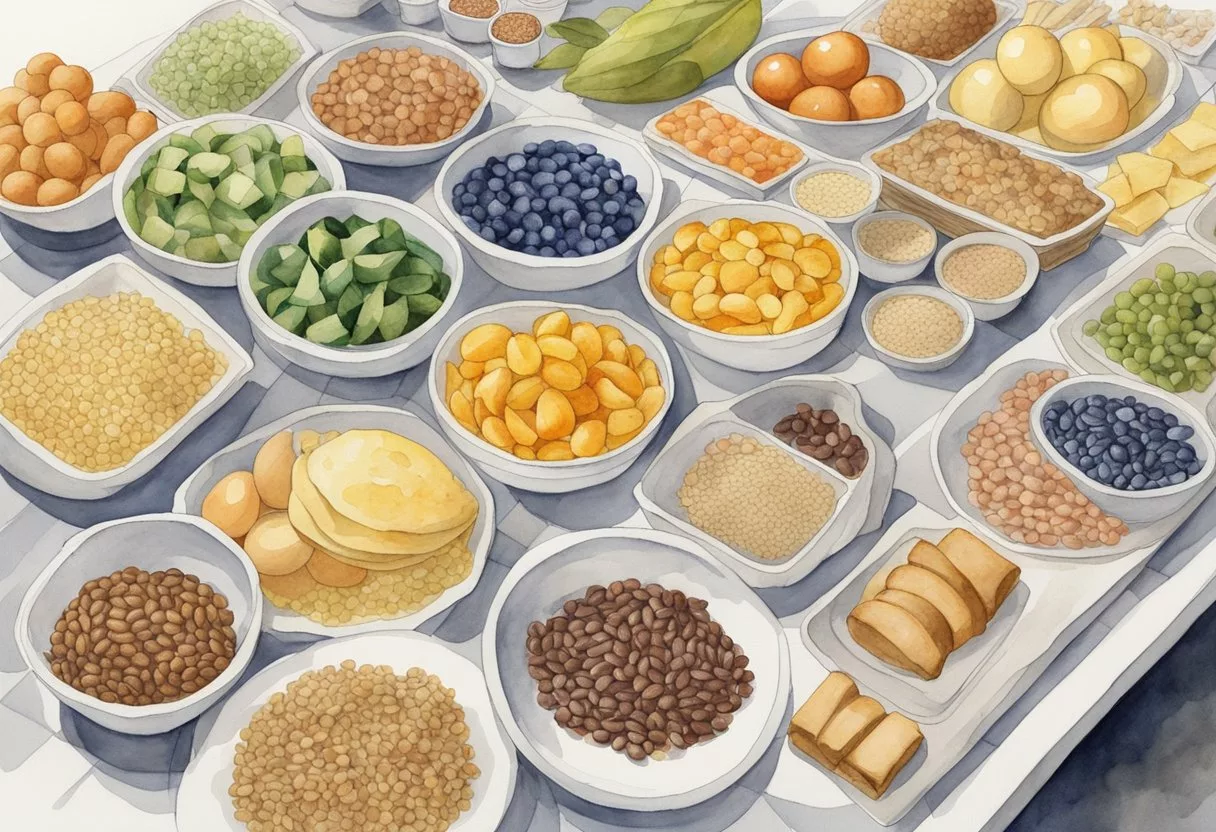
The glycemic index (GI) of foods plays a key role in blood sugar management. Different foods have varying effects on blood glucose levels based on their GI rating.
High-GI Foods to Limit
Foods with a high GI can cause rapid spikes in blood sugar. These include:
- White bread
- Potatoes
- White rice
- Cookies and sweets
A baked potato has a GI of 85, while white bread scores 75. These foods are quickly digested and absorbed, leading to fast glucose increases.
It’s best to eat high-GI foods in small portions. Pairing them with protein or fat can help slow digestion and reduce their impact on blood sugar.
Moderate-GI Foods and Their Place in Your Diet
Moderate-GI foods have a less extreme effect on blood sugar. Examples include:
- Whole wheat bread
- Brown rice
- Sweet potatoes
- Oatmeal
These foods digest more slowly than high-GI options. Brown rice has a GI of 50, compared to 73 for white rice.
Moderate-GI foods can be part of a balanced diet. They provide steady energy without major blood sugar swings.
Low-GI Foods for a Balanced Diet
Low-GI foods are best for stable blood sugar. These include:
- Non-starchy vegetables
- Legumes
- Most fruits
- Nuts and seeds
Lentils have a low GI of 32. Apples score 36. These foods digest slowly, providing gradual glucose release.
A diet rich in low-GI foods can improve blood sugar control. It may also aid weight management and heart health.
Combining low-GI foods with moderate or high-GI choices can lower the overall glycemic impact of a meal.
Food Preparation and GI Values
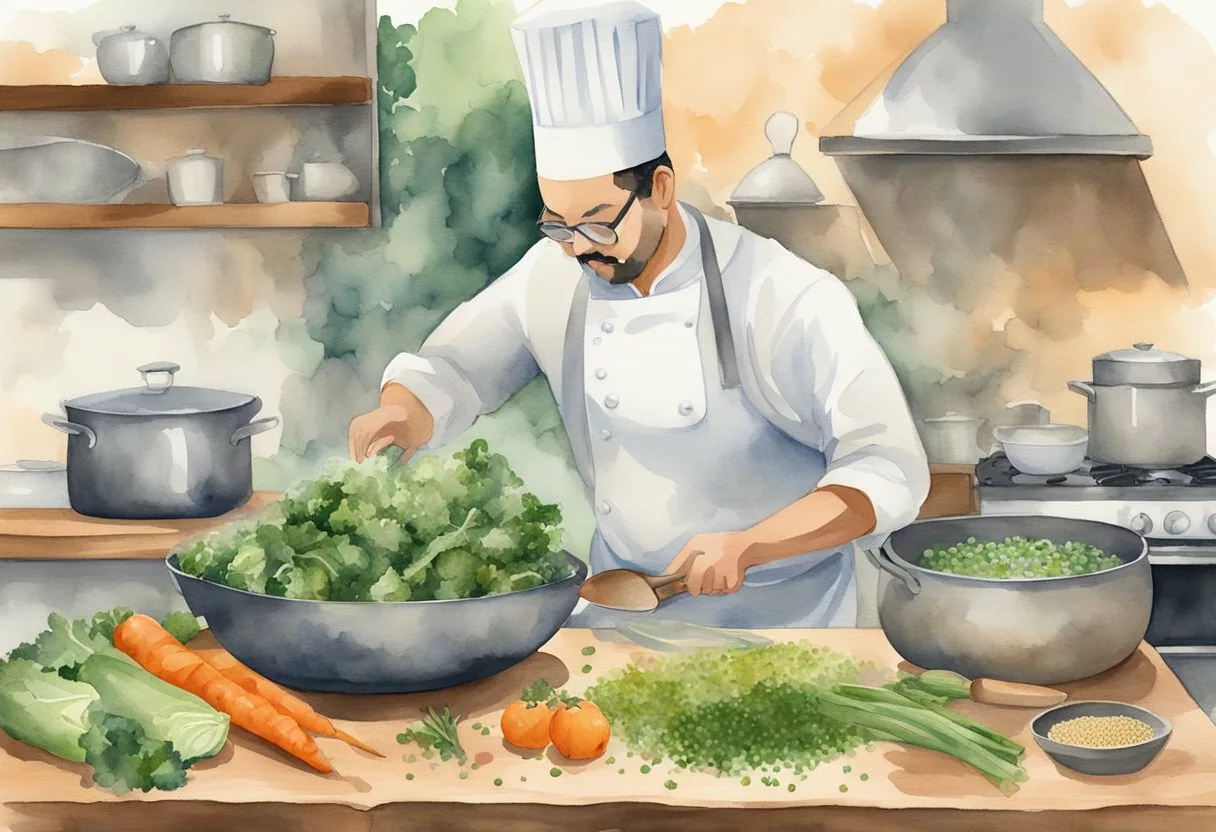
The way we prepare and process foods can significantly change their glycemic index (GI) values. Cooking methods and food processing techniques play a crucial role in determining how quickly our bodies digest carbohydrates and raise blood sugar levels.
How Cooking Methods Affect GI
Boiling foods can lower their GI by making starches more resistant to digestion. For example, boiled potatoes have a lower GI than baked or fried potatoes. Overcooking pasta or rice can increase their GI, so it’s best to cook them al dente.
Frying foods often increases their GI due to the breakdown of fiber and starch. French fries typically have a higher GI than boiled potatoes.
Grains like oats and barley maintain a lower GI when prepared as whole grains rather than refined flours. Steel-cut oats have a lower GI than instant oatmeal.
The Impact of Food Processing on GI
Food processing can significantly alter the GI of foods. Refined grains have higher GI values than whole grains because processing removes fiber and other components that slow digestion.
Grinding grains into flour increases their surface area, making them easier to digest and raising their GI. Whole wheat bread often has a lower GI than white bread.
Adding acids like vinegar or lemon juice to meals can lower the overall GI by slowing digestion. Fermentation, as in sourdough bread, can also reduce GI.
Processed foods often have higher GIs due to added sugars and refined ingredients. Choosing minimally processed options can help maintain lower GI values in meals.
Strategies to Lower the Glycemic Index in Meals
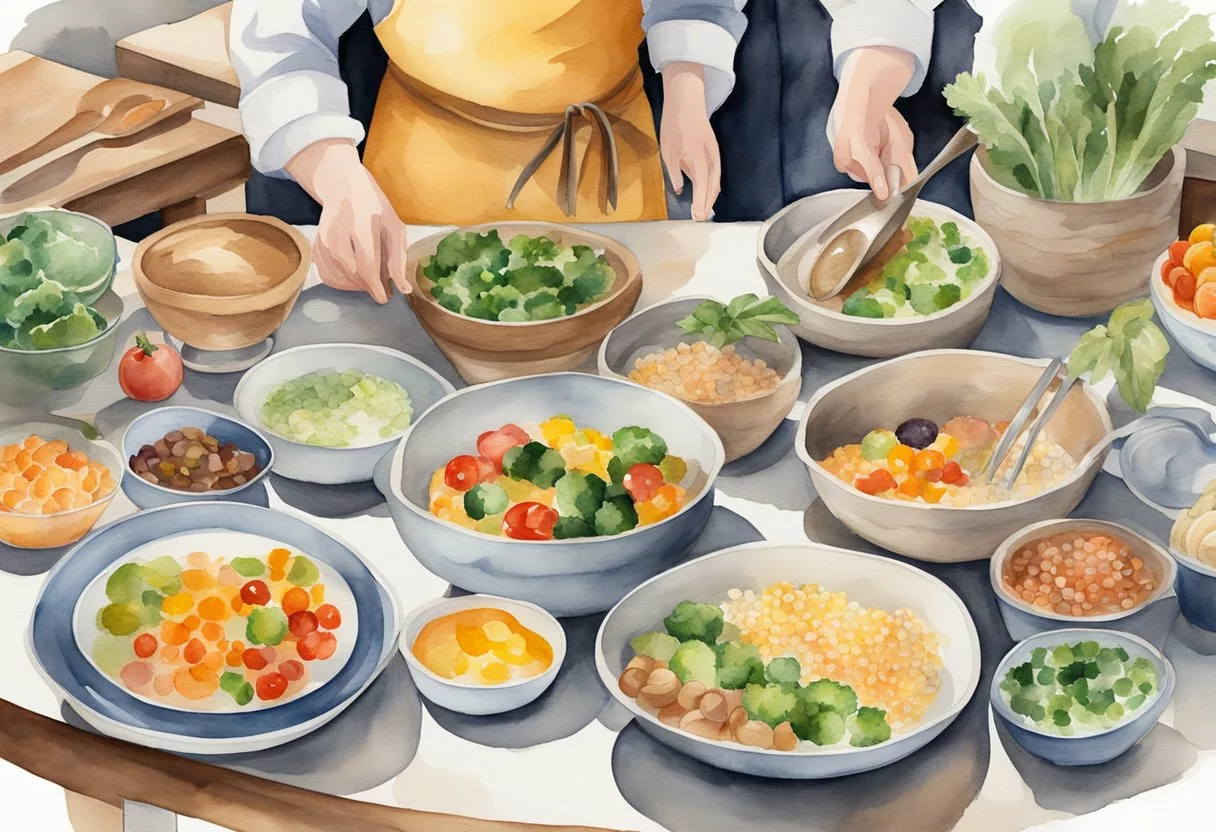
Lowering the glycemic index of meals involves combining foods and using specific cooking methods. These strategies can help manage blood sugar levels effectively.
Incorporating Protein and Healthy Fats
Adding protein and healthy fats to meals can reduce the glycemic impact[4]. Protein-rich foods like chicken, fish, or tofu slow down digestion and glucose absorption.
Healthy fats also play a crucial role. Nuts, olive oil, and avocados can be added to meals to lower the overall glycemic index. For example, spreading almond butter on toast or adding avocado to a sandwich can help.
Dairy products, such as Greek yogurt or cheese, provide both protein and fat. These can be paired with higher glycemic index foods to balance the meal’s impact on blood sugar.
The Role of Fiber in Reducing GI
Fiber is a powerful tool for lowering the glycemic index of meals. It slows down digestion and helps regulate blood sugar levels.
Whole grains are an excellent source of fiber. Swapping refined grains for whole grain options can significantly reduce a meal’s glycemic impact. For instance, choosing brown rice over white rice or whole wheat pasta over regular pasta.
Vegetables, especially non-starchy ones, are high in fiber and low in calories. Adding a variety of colorful veggies to meals can help lower the overall glycemic index.
Beans and lentils are fiber-rich foods that also provide protein. They make an excellent addition to salads, soups, and stews.
Balancing Meals for Optimal Glycemic Control
Creating balanced meals is key to managing glycemic impact. A well-balanced plate should include protein, healthy fats, fiber, and complex carbohydrates.
Combining certain foods can help lower the overall glycemic index of a meal. For example, pairing a high-GI food with a low-GI food can balance out the meal’s impact on blood sugar.
Portion control is also important. Eating smaller portions of high-GI foods and larger portions of low-GI foods can help manage blood sugar levels.
Meal timing can play a role in glycemic control. Spreading food intake throughout the day in smaller, frequent meals can help maintain steady blood sugar levels.
Dietary Changes for Improved Glycemic Control
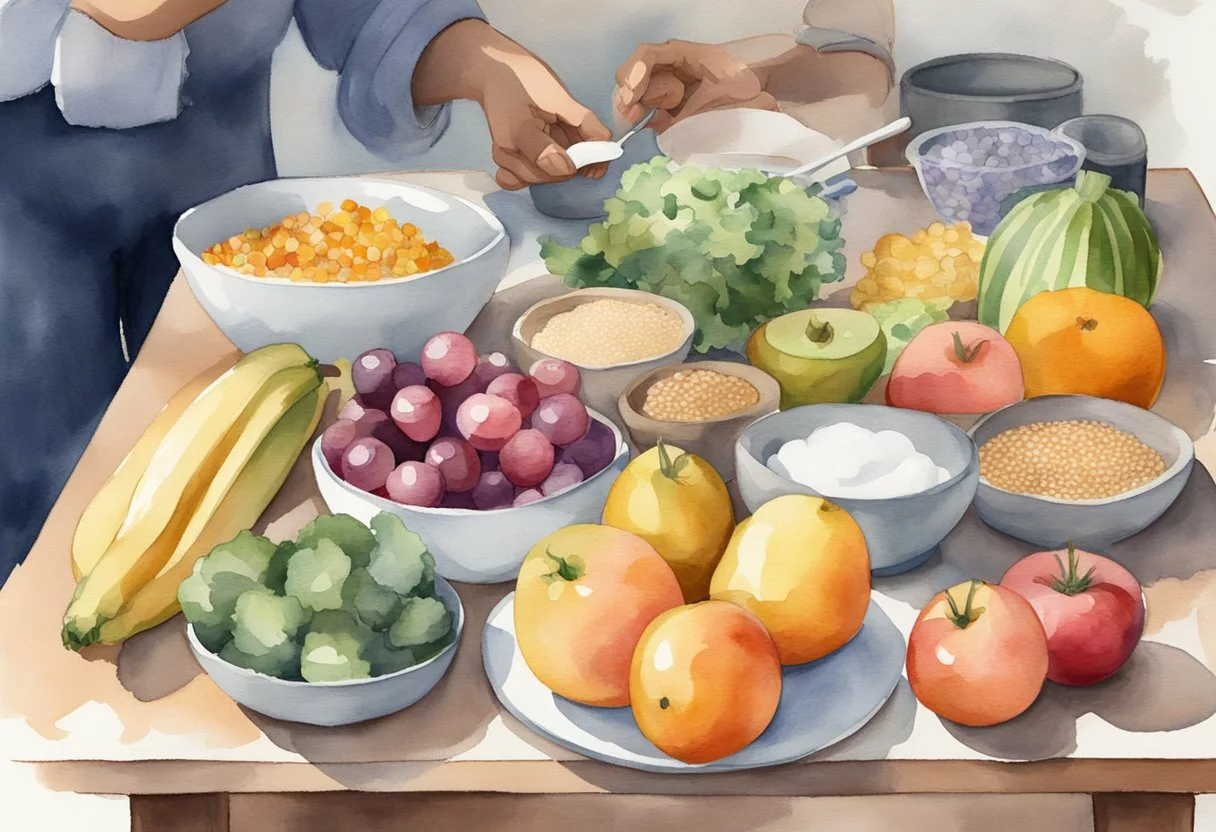
Making smart food choices can help manage blood sugar levels. By selecting low-glycemic foods and planning meals carefully, you can achieve better glycemic control.
Identifying Low-GI Alternatives
Foods with a low glycemic index[5] (GI) raise blood sugar more slowly. Good options include:
- Whole grains like quinoa and barley
- Non-starchy vegetables such as broccoli and spinach
- Legumes like lentils and chickpeas
- Most fruits, especially berries and citrus
Swap high-GI foods for lower-GI options. For example, choose sweet potatoes over white potatoes, or whole grain bread instead of white bread.
Combining high-GI foods with protein or healthy fats can also lower the overall GI of a meal. Adding nuts to cereal or avocado to toast are easy ways to do this.
Meal Planning with the GI in Mind
Planning meals with the glycemic index in mind can lead to better blood sugar control. Here are some tips:
- Include a low-GI food at each meal
- Balance higher-GI foods with low-GI options
- Add protein to carbohydrate-rich meals
A sample balanced meal might include grilled chicken (protein), brown rice (low-GI carb), and steamed vegetables (low-GI). This combination helps slow down digestion and sugar absorption.
For snacks, pair a piece of fruit with some nuts or cheese. This combo provides nutrients and helps maintain steady blood sugar levels between meals.
Portion Control and Frequency of Eating
Controlling portions is crucial for managing blood sugar. Even low-GI foods can spike blood sugar if eaten in large amounts.
Use smaller plates to help with portion control. Fill half the plate with non-starchy vegetables, a quarter with lean protein, and a quarter with whole grains or starchy vegetables.
Eating smaller meals more frequently can also help. This approach keeps blood sugar levels more stable throughout the day. Aim for 3 small meals and 2-3 snacks daily.
Timing matters too. Try to arrange meals evenly and avoid long gaps between eating. This helps prevent big swings in blood sugar levels.
Remember to drink water with meals. It aids digestion and can help you feel full, reducing the temptation to overeat.
Special Considerations

The glycemic index of foods can vary based on individual factors and nutritional content. Understanding these nuances helps make better dietary choices.
Glycemic Responses and Individual Variability
Blood sugar responses to foods can differ from person to person. Factors like age, activity level, and insulin sensitivity play a role in how the body reacts to carbohydrates.
Some people may have stronger reactions to certain foods than others. For example, a banana might cause a bigger blood sugar spike in one person compared to another.
Stress, sleep quality, and overall health can also affect glycemic responses. Testing personal reactions to different foods can be helpful for managing blood sugar levels effectively.
Beyond GI: Considering Nutritional Quality
While the glycemic index is useful, it’s not the only factor to consider when choosing foods. Nutritional quality matters too.
Some low-GI foods[6] may lack important nutrients. On the other hand, some higher-GI foods can be part of a healthy diet when eaten in moderation.
Key nutrients to look for include:
- Fiber
- Vitamins
- Minerals
- Healthy fats
Balancing glycemic impact with overall nutritional value is important. For example, whole grains may have a higher GI than some processed foods, but they offer more nutrients and fiber.
Frequently Asked Questions
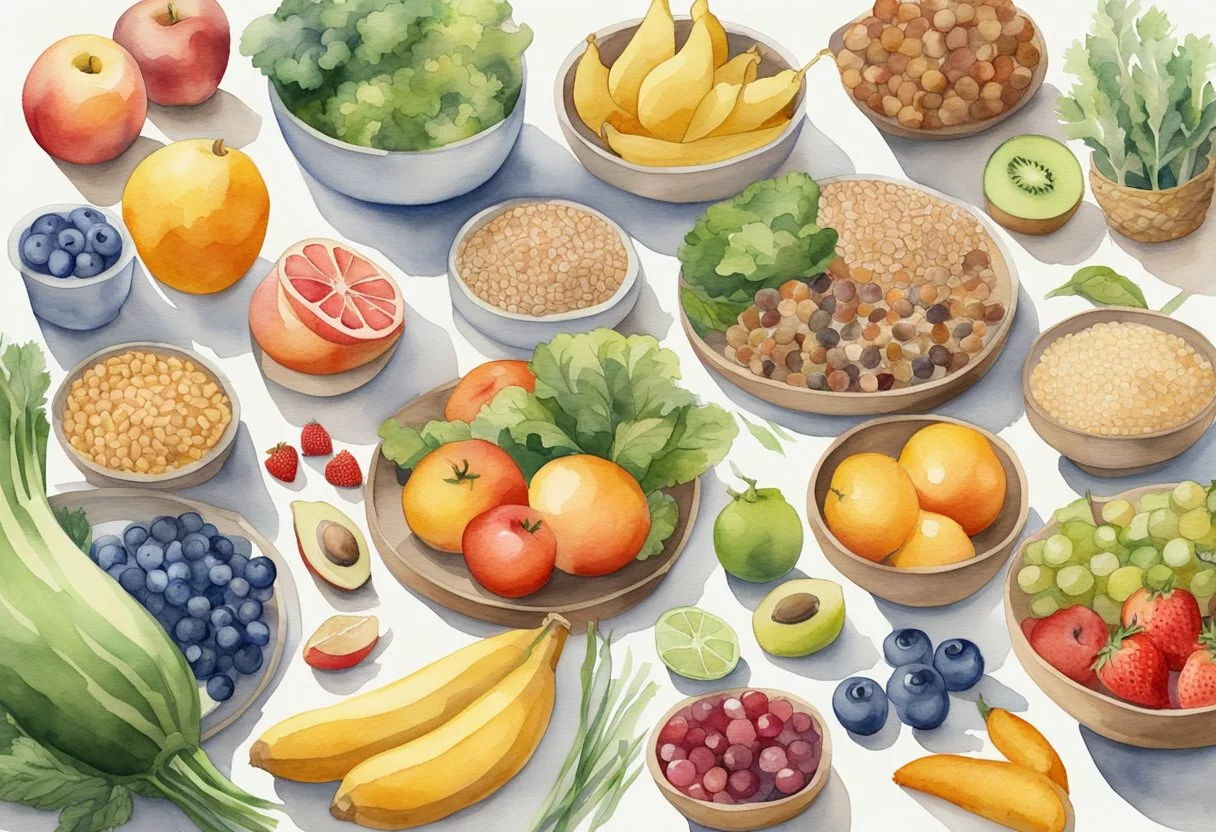
Many people wonder about practical ways to manage the glycemic impact of their diet. The following questions address common concerns about food choices, preparation methods, and combining ingredients to achieve better blood sugar control.
What are some effective strategies for combining foods to reduce their overall glycemic effect?
Pairing high-carb foods with protein, fat, or fiber can slow digestion and lower the glucose response. Adding nuts to oatmeal or eating cheese with bread are good examples.
Consuming vinegar or lemon juice with meals may also help reduce blood sugar spikes. These acidic additions can slow down carbohydrate absorption.
Which specific foods can I eat to maintain a low glycemic diet?
Beans, minimally processed grains, and most fruits and vegetables have a low glycemic index. Non-starchy vegetables like leafy greens, broccoli, and bell peppers are excellent choices.
Whole grains such as quinoa, barley, and steel-cut oats are good options. Berries, apples, and citrus fruits tend to have lower glycemic impacts compared to other fruits.
Could you provide a list of high glycemic foods that should be limited or avoided?
Processed foods like candy, breads, cakes, and cookies often have a high glycemic index. White rice, instant oatmeal, and potatoes are also high on the glycemic scale.
Sugary drinks, including sodas and fruit juices, can cause rapid blood sugar spikes. Limiting these foods can help maintain steadier blood glucose levels.
Are there any cooking techniques that help in reducing the glycemic index of meals?
Cooking pasta al dente (slightly firm) can lower its glycemic impact compared to fully cooked pasta. Cooling cooked potatoes or rice before eating can increase their resistant starch content, reducing their glycemic effect.
Using moist cooking methods like boiling or steaming instead of dry heat cooking can also help lower the glycemic index of some foods.
Is it possible to find zero glycemic index foods, and what are some examples?
While no food has a glycemic index of exactly zero, some come close. Meats, fish, eggs, and most vegetables have minimal impact on blood sugar. Leafy greens, mushrooms, and herbs are examples of foods with very low glycemic effects.
Oils and fats also have negligible effects on blood glucose levels when consumed in moderation.
How can I alter the preparation of rice to achieve a lower glycemic response upon consumption?
Cooking rice with a bit of coconut oil and letting it cool before eating can increase its resistant starch content. This process can lower the rice’s glycemic impact.
Mixing rice with vegetables or beans can also reduce its overall glycemic effect. Choosing brown rice over white rice is another way to lower the glycemic response to this staple food.
References
- Low GI Foods: Why they Matter for Glucose Levels. https://www.abbott.com/corpnewsroom/nutrition-health-and-wellness/low-gi-foods-why-they-matter-for-glucose-levels.html Accessed October 27, 2025
- MSN. https://www.msn.com/en-xl/health/nutrition/low-glycemic-index-foods-here-are-the-right-carbohydrates-for-perfect-health/ar-AA1pwjZO Accessed October 27, 2025
- Glycemic Index: What It Is and How To Use It. https://health.clevelandclinic.org/glycemic-index Accessed October 27, 2025
- 14 ways to reduce the glycemic impact of your meal. https://www.besthealthmag.ca/article/14-ways-to-reduce-the-glycemic-impact-of-your-meal/ Accessed October 27, 2025
- Diabetes diet: Create your healthy-eating plan. https://www.mayoclinic.org/diseases-conditions/diabetes/in-depth/diabetes-diet/art-20044295 Accessed October 27, 2025
- 8 principles of low-glycemic eating. https://www.health.harvard.edu/healthbeat/8-principles-of-low-glycemic-eating Accessed October 27, 2025
